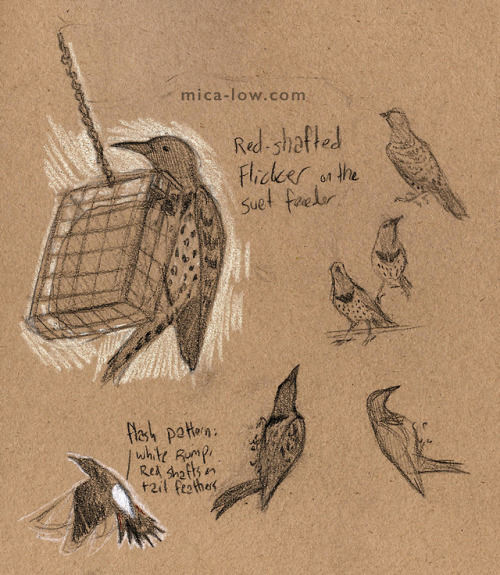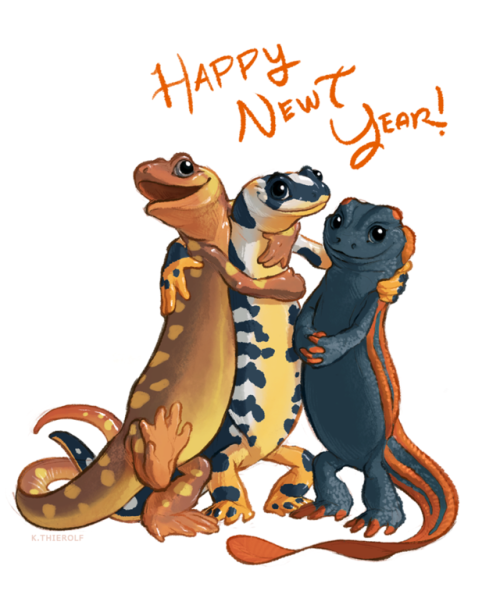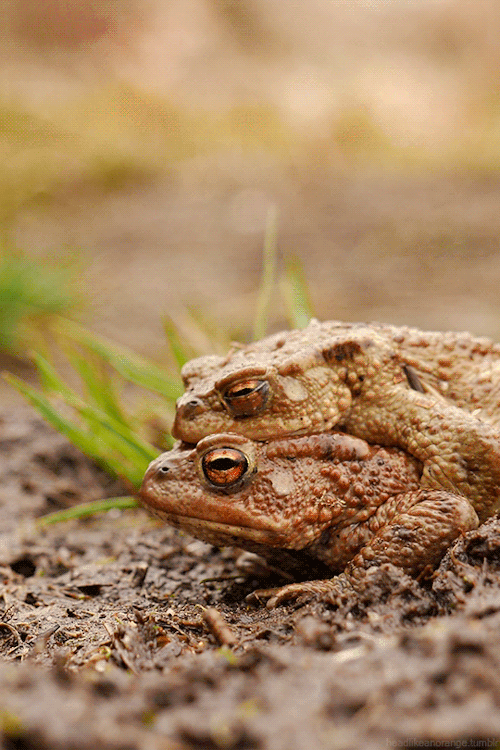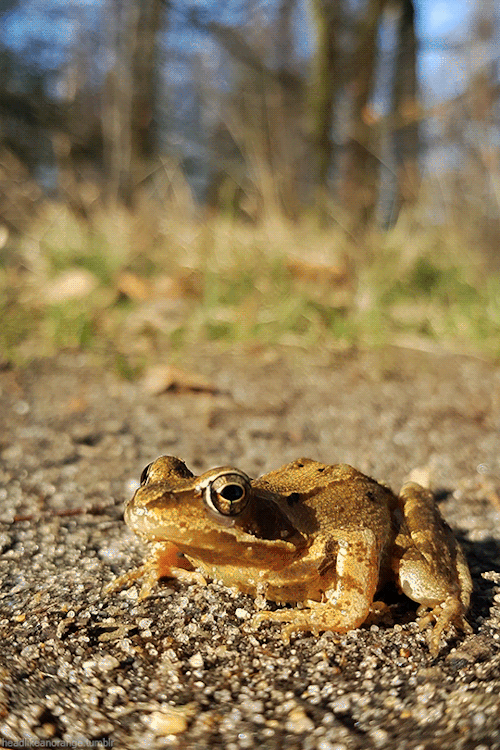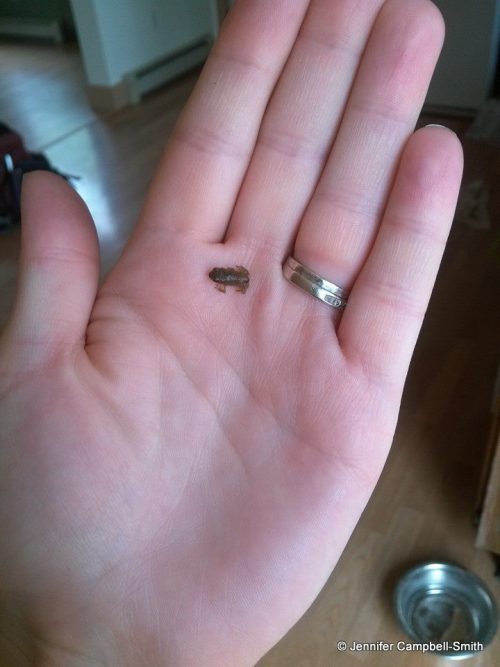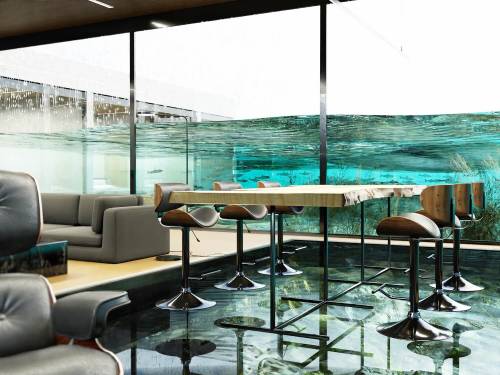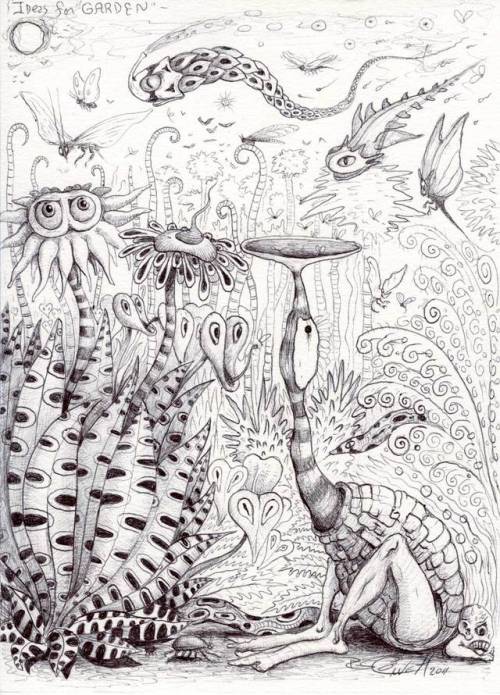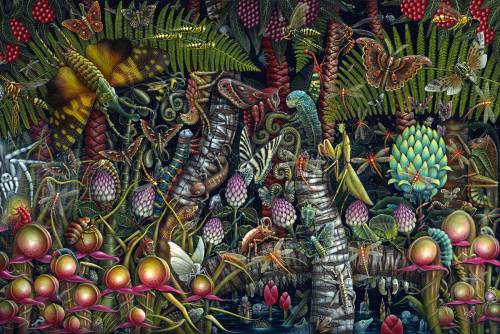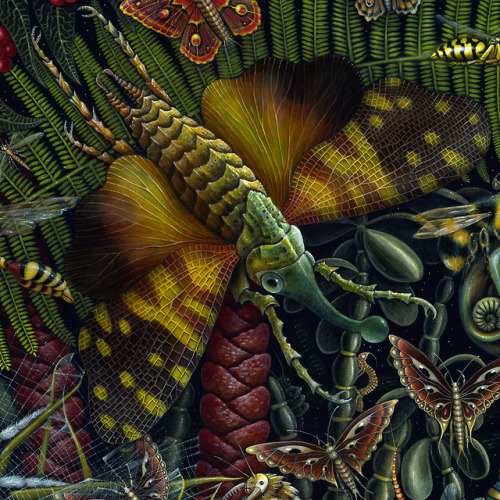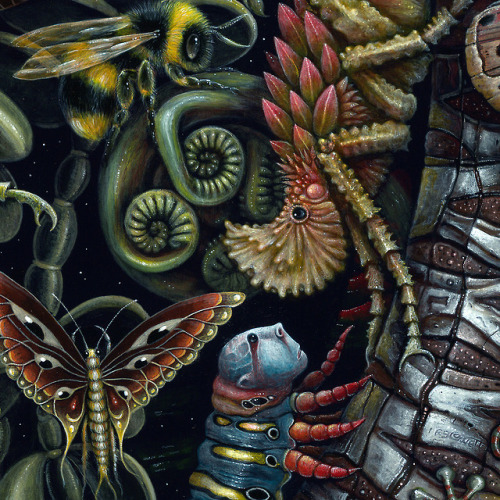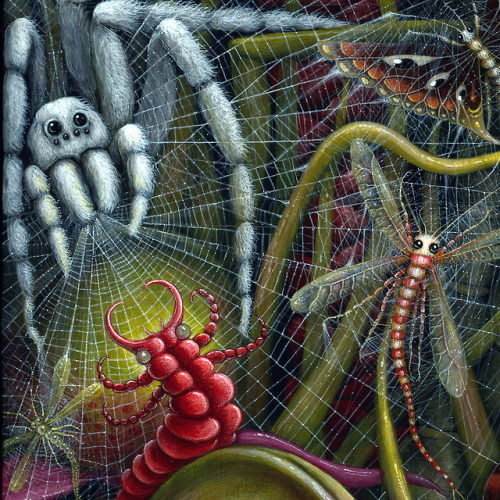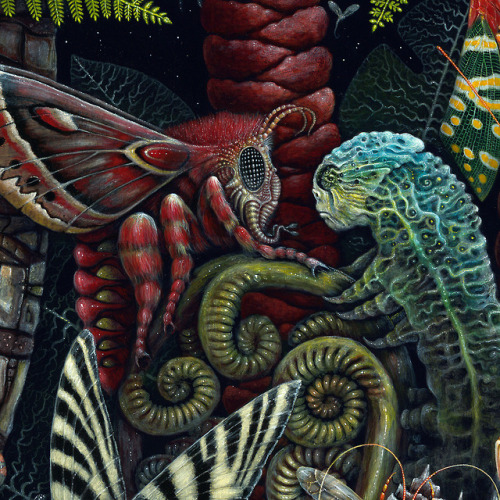#amphibian
Selected sketchbook pages summer 2017-spring 2018, part 1- these are all preparatory studies for my master’s thesis, which you’ll see more of soon!
Post link
Saw this frog yesterday not sure yet what kind it is but I will find out #frog #amphibian #wildlife #florida #frogsofflorida (at Vizcaya Museum & Gardens)
Post link

Prehistoric Amphibians poster
These prehistoric amphibians, ranging from the tiny Microbrachis to the 30 ft long behemoth Prionosuchus, roamed the earth’s swamps and wetlands millions of years ago. They are now gathered together for a primordial swamp party in this charming full-color poster.
Design by Caroline Fleet
Animal Crossing Fish - Explained #181
Brought to you by a marine biologist and the jokester himself…
CLICK HERE FOR THE AC FISH EXPLAINED MASTERPOST!
Gonna warn ya…this might be a long one. So instead of doing my usual introduction, I will start out by saying that we will be covering Dr. Shrunk the axolotl today, because today is April 1st and it’s just too perfect for me to miss out on. Dr. Shrunk has quite the journey during his professional career from AC Wild World to New Leaf. He’s a psychologist (so the Dr. title is real!), then a not funny comedian, and then the owner of ClubLOL. No matter where he’s working, though, his main job was to unlock emotions for the player to use, so explains why he’s not in New Horizons - the villagers stole his job.
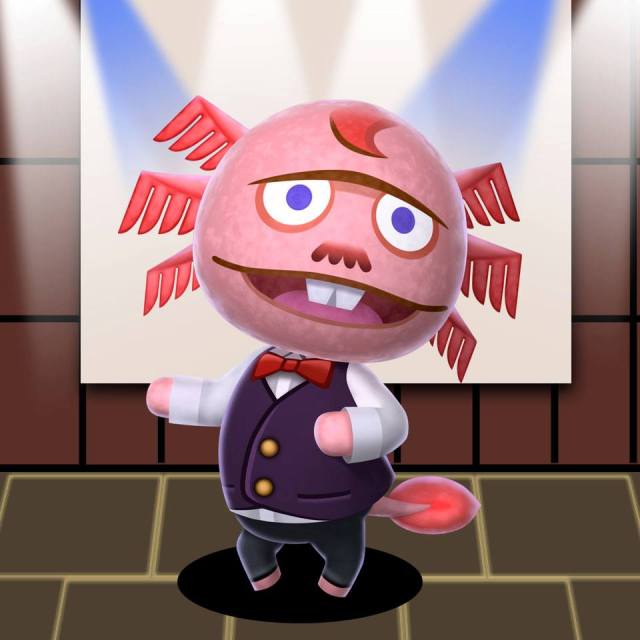
They really went to town making Dr. Shrunk an accurate axolotl. (And don’t be surprised if you’re not pronouncing that right; I can’t either.) Of course, I will explain! See, the axolotl is actually a type of salamander, meaning that it is an amphibian. Amphibia, the class of the amphibians, are a group of tetrapods that, unlike all other extant tetrapods (mammals, reptiles, and birbs), they rely on water for at least part of their life cycle. Their eggs do not have hard, protective shells, so they can dry out very quickly. Amphibians also typically start life as larvae, just like fish do. The larvae have gills, but metamorphose into adults with lungs. Well…most do. The axolotl, Ambystoma mexicanum, doesn’t!

By ZeWrestler - Own work, CC BY 3.0, https://commons.wikimedia.org/w/index.php?curid=10201881
Axolotl adults still have their gills, which are the pink feathery stalks on either side of their head, and live their whole lives underwater, just like other amphibian larvae do. This retention of “juvenile” traits is called neoteny, which is the mechanism by which the animal’s body has slowed or delayed their physical development into adulthood. Meaning, they still look like “kids”, and that’s called paedomorphism. They do have an “adult color” of darker olive brown with gold speckling in the wild, but captive breeding has led to other color variants, of which, Dr. Shrunk doesn’t resemble any that I can find. He is most likely based off the leucistic variety, which is white with black eyes, as shown above. They have pretty weak limbs, too, which is featured on Dr. Shrunk and his tiny bent legs.
Despite the fact that the axolotl may be the most famous salamander out there, as it is a popular exotic pet, in the wild it’s considered Critically Endangered. The axolotl is native to Mexico, and at one time, its range extended throughout the wetlands and lakes of the Central Mexico Valley. However, it’s disappeared from most of that, now occupying a 467 square kilometer area within Mexico City. I can’t even begin to tell you how incredibly tiny that area is. Living as a sensitive freshwater species has all downsides as their remaining habitat is threatened by multiple factors, like pollution, development, and invasive species. Maybe one day the axolotl may only exist in captivity…and that’s no laughing matter.
And there you have it. Fascinating stuff, no?



Some images of a red eft (larval stage of Eastern red spotted newt) from 8/8/21.
Telmatobufo bullocki (Bullock’s Mountains False Toad), a critically endangered frog residing in Chile.
Frominaturalist.org:
“It is extremely rare; extensive fieldwork in 1992–2002 turned up only a single adult. It occurs in fast-flowing streams in temperate Nothofagus forest. The tadpoles are free-swimming and feed on algae growing on submerged rocks. It is threatened by siltation of streams caused by clear-cutting. It occurs within the Nahuelbuta National Park.”
Post link
TheCalifornia giant salamander,Dicamptodon ensatus, growing up to 12 inches long, is one of North America’s largest salamanders.
photograph by Dick Bartlett (used w/ permission)
Post link
Itsy-bitsy, teeny-tiny American toads (Anaxyrus americanus) are emerging from various ponds this time of year. Too cute!
Post link
I spent my day working on describing new species of Rhombophryne, the ‘diamond frogs’ of Madagascar. I’ve been working on these frogs since 2013, and have described more than half of the currently known species, but there are still so many species to describe.
Here, I am working on the second most important part of the description of one new species: the holotype description. This involves very careful examination and description of the features of the one specimen that ‘carries’ the name of the species. As you can see, I talk with myself a lot while I am doing this. I’m noting aloud features that are substantially different from other species, or things that are worth describing. I find this quite the best way to keep the features in my mind while I am looking at a lot of things at once—but of course it only works while I have my office to myself.
The *most* important part of every species description is the diagnosis. This includes the list of features that are the ones that ‘define’ your new species, and in many cases also the way that it can be told apart from all the other relevant species. In the case of the paper I am working on here, that is the last thing I will be doing for each species, as it will depend on having everything described and ready beforehand.
horni boy

This is another insect/garden thing I did back in 2012. These two, (drawing and painted drawing) are a little different from what I’m doing now because it’s in my old sketchy cartoon style. (Untitled)
Post link




